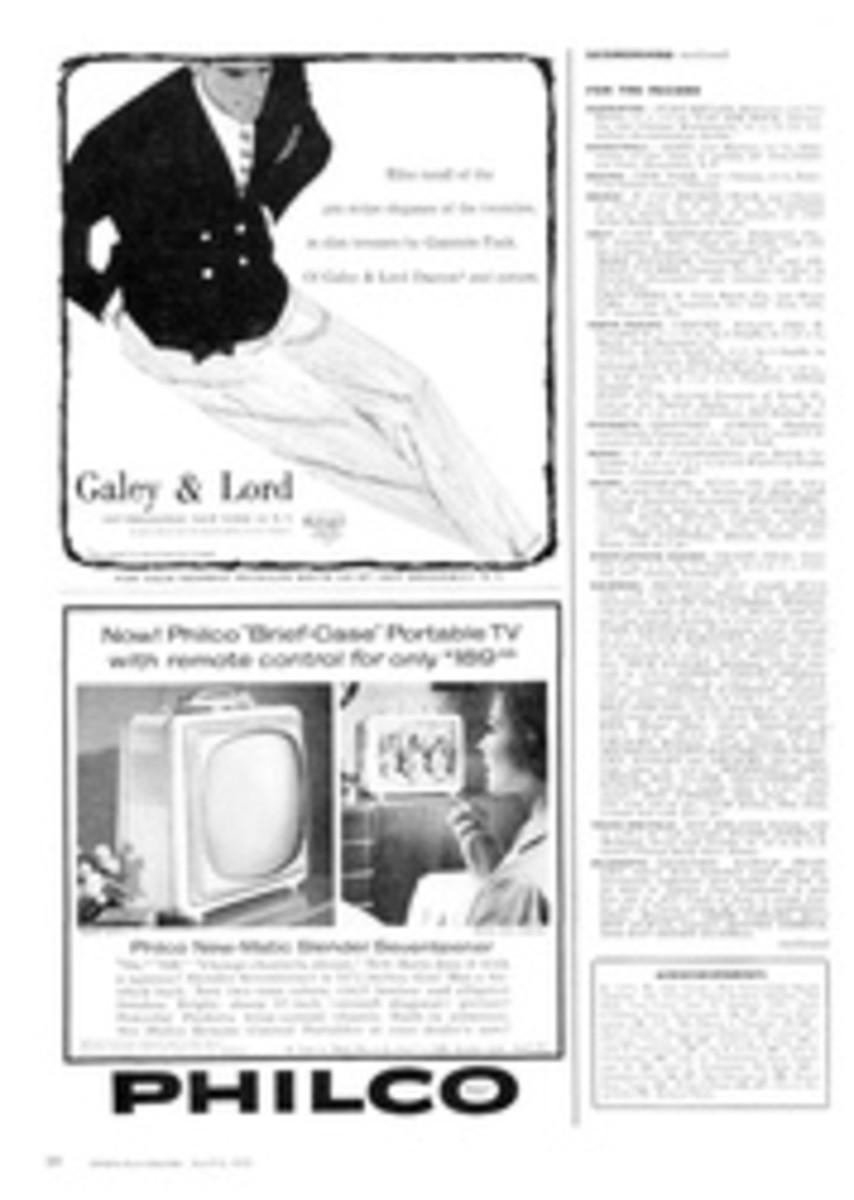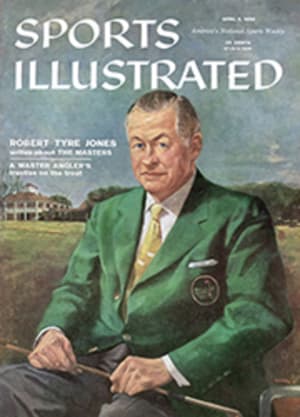
Deep-water win for Bus
Before the start of the culminating race of the Southern Circuit, the fleet moored stern-to at the Club Nautico Internacional de la Habana looked much the same as usual. Thirty-two boats had made the passage down from St. Petersburg across the Gulf of Mexico and the Gulf Stream to Cuba, the second largest number in history, and final preparations were under way for the scheduled jump to Varadero, 60 nautical miles along the coast to the east.
Masthead flags snapped in bright contrast to the ancient stone battlements of Morro Castle across the harbor, crew members stowed away a last plate of frijoles negros on the clubhouse veranda, and sails and other gear passed along the walkways behind the boats. All appeared normal.
Yet there was a subtle difference from the carefree spirit of other years, when Havana was a sailor's port with few peers anywhere in the world. Now, at the club entrance, in addition to the traditional maracas and rakish straw hats, sidewalk vendors sold souvenirs of the 26th of July movement—bushy beards which fastened on with elastic, red-and-black-patch campaign caps and even dolls representing the leader, while full-size counterparts strode the street and wandered through the club at will, long-haired and replete with beard when old enough to grow one, none without pistol or submachine gun.
At the banquet the previous night several famous Cuban yachtsmen had been prominent by their absence, while equally prominent by their presence at the speaker's table were pony-tailed revolutionaries in green fatigue uniforms. Criollo, winner of the Southern Ocean Racing Conference championship in 1957, was now manned by the Cuban navy, having been confiscated by the government, its owner, Luis Vidaña, an exile. Earlier, veteran Race Chairman Lew McMasters, after being made an honorary life member in both leading Havana yacht clubs, had been stopped, detained and searched on his way to repair the leaking Marelen Ill.
WEATHER AND POLITICS
Outside, the weather was as uncertain as the political and economic future of Cuba. A cold front heavy with wind and rain had made its way down the Florida coast, and now sat motionless over the Gulf Stream, interrupting the normal flow of the trade wind. Spatters of rain fell as the fleet left harbor for a 4 p.m. start on Friday, March 20th.
In many ways the series constituting the Southern Circuit of 1959 had been unusual. After a buster in the nonscored warmup race to Gun Cay, the Lipton Cup off Miami had been a drifting match. The Miami-Nassau and Nassau Cup events had been more normal, sailed in fresh easterly winds; but the St. Petersburg-Havana, usually a reach, had been a windward thrash "for the first time in history," according to McMasters.
Callooh, the winner, a 43-foot overall Sparkman & Stephens centerboard yawl, after beating out of Tampa Bay, had gone hard on the wind on the port tack. Passing some 20 miles outside Dry Tortugas, she had not come about until sighting the Cuban coast westward of Havana. Tacking for the first time in over 200 miles, she screamed along the shore, enjoying smoother water and a boost from the Gulf Stream. It had seemed a big-boat race. The 67-foot cutter, Lobo de Mar, had finished first, followed four hours later by Hilaria. Three other class A vessels came across in the next three hours, while the wives of the Callooh crew sat despairingly atop the Havana Hilton Hotel, staring seaward. For many miles to the north the ocean lay empty, a vast blue expanse unmarred by the white triangle of a single sail. Time ticked away. It appeared no other boat could finish for hours. Then dramatically, Callooh appeared from the west, having been hidden by the land, to win with a corrected-time margin of 4 minutes 1 second.
Skippered by Emil (Bus) Mosbacher Jr., of Vim fame in the summer's America's Cup campaign, Callooh had a comfortable lead on points going into the ultimate event. Score points are awarded primarily on the basis of distance and number of boats beaten. The longer the race, the bigger the percentage. Thus Callooh's first in the 284-mile St. Petersburg-Havana race yielded more points than Rhubarb's win in the 184-mile Miami-Nassau, especially as Callooh had had a second in the latter, while Rhubarb had slid to fifth coming to Havana. Now, for the Tripp-designed fiberglass yawl to take the championship trophy she would have to put 13 boats between herself and Callooh during the passage to Varadero.
Aboard Callooh, on which I sailed this final race, there was optimism, but also determination to sail as hard and well as possible. At lunch, Bus had said jokingly, "I guess we have a chance unless we lose the mast or go aground," but there was no levity on the way to the starting line. In such fluky conditions, anything could happen. A light norwesterly wind combined with a lumpy sea gave the fleet bare steerageway, but Bus Mosbacher proved as able a starter in handicap fleet racing as in match racing. Getting his wind clear at the weather end of the line (he had said on the way out, "I think in a fleet like this the most important thing is to keep from being blanketed by the big fellows"), Callooh stayed well among the leaders during daylight.
Darkness brought almost total collapse of the breeze, and each boat struggled to keep spinnakers drawing through the early hours. Here the fleet split: we could see some masthead lights well off shore and others close under the beach. Our agreed strategy had been to stay near Rhubarb during daylight while we could identify her, and sail a middle course after dark, thus covering as much of the fleet as possible.
After midnight the land breeze of the tropics appeared as expected, favoring those nearest the shore, and lifted speeds above five knots for the first time. Gradually it swung eastward, bringing the fleet on the wind. Callooh started to walk. We watched masthead lights begin to drop back, but little distance remained to the finish. Again the inshore yachts were favored, as those outside had to tack for the line. The Rhodes-designed fiber-glass bounty, Glass Slipper, sailed by M. H. Hogan of the Southern Yacht Club of New Orleans, was winner, followed by two Block Island 40s, Rhubarb and Southern Star II.
But Callooh's seventh place earned the SORC championship for Bus Mosbacher, sailing his first ocean series as skipper. His name will go on the trophy next to brother Bob, who won last year. Bus had taken a boat which had never been a top competitor for two previous owners and brought her to victory, ably assisted by the hard core of shellbacks who sailed every race—Vic Romagna, Lee Loomis and Norman Bates. "Part of Callooh's success was due to plain hard work," said Dick Bertram, who was aboard to Nassau. "It was a boat unfamiliar to all hands and which had not been raced in months. Attention to detail—and sails—did it. And also Bus's ability as helmsman to sail a boat closer to the wind while keeping her going than anyone I know."
While it was a good year for the Southern Circuit and the small fat centerboarders, there is—unfortunately—some doubt about the future of Cuban yachting. One veteran observed: "Cubans love sailing and are good at it. If they continue to be a wealthy people, their yachting will develop. If not, there will be nothing but the navy. It depends on the economic situation, and that depends on Fidel Castro."
PHOTO
CONGENIAL BUS MOSBACHER MAY BE BEST U.S. HELMSMAN
PHOTO
JACK BROWN'S TRIM YAWL "CALLOOH" CAME ALIVE UNDER MOSBACHER TOUCH
SOUTHERN CIRCUIT RESULTS
LIPTON TROPHY (28 miles triangular, scored as 5% of SORC total points) Tioga, Southern Star II, Meteor III (Rhubarb 6th, Callooh 14th)
MIAMI-NASSAU (184 miles, 32%) Rhubarb, Callooh, Southern Star II
NASSAU CUP (30 miles, 5%) Callooh, Ariel V, Comanche (Rhubarb 4th)
ST. PETERSBURG-HAVANA (284 miles, 48%) Callooh, Hilaria, Lobo de Mar (Rhubarb 5th)
HAVANA-VARADERO (60 miles, 10%) Glass Slipper, Rhubarb, Southern Star II (Callooh 7th)

